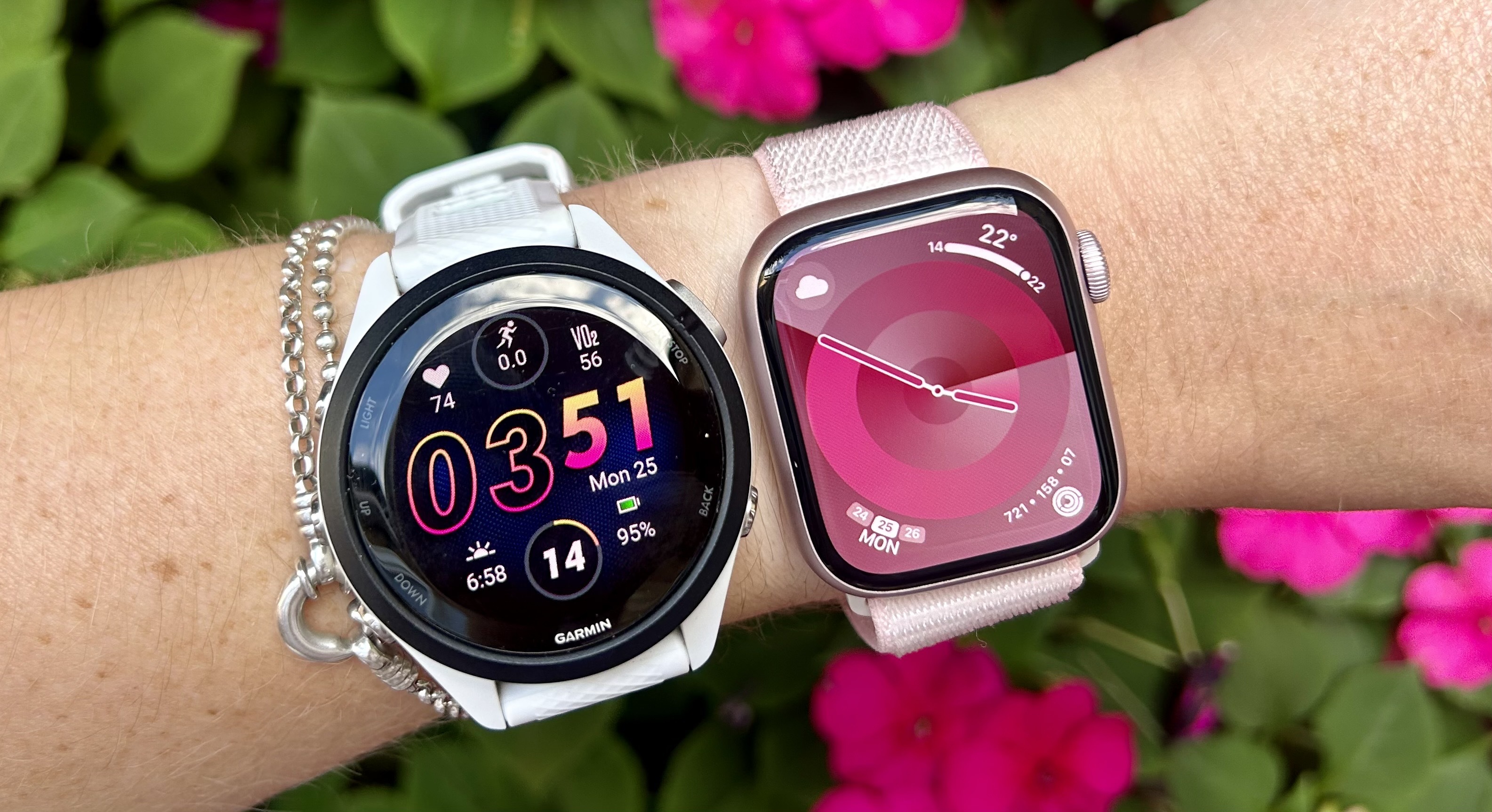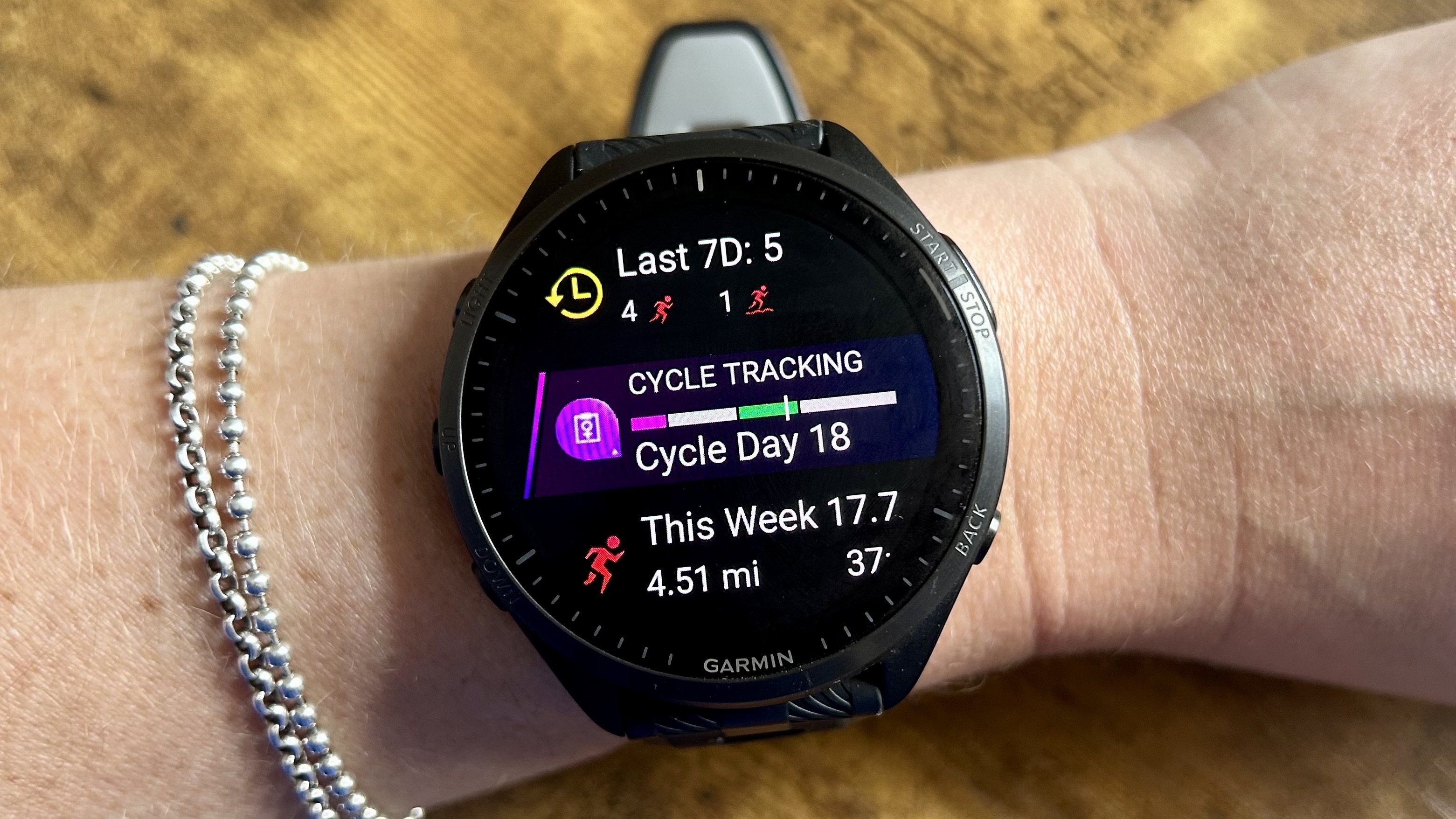
We expect an awful lot from our smartwatches and fitness trackers these days — it’s no longer enough to just track our steps, calories burned, and sleep. We rely on our gadgets to track everything from our resting heart rate to our menstrual cycles. However, despite huge advances in this area, Apple is still missing a trick, especially compared to Garmin.
As a fitness editor, I’m lucky enough to review some of the best running watches and fitness trackers on the market. As a marathon runner, I’ve always wanted my gadgets to keep up with me — I’ve used the best Garmins to record countless training miles and used my Oura ring to record how well I’ve recovered from a race. More recently, I’ve been looking to track something completely different, as I am currently 26 weeks pregnant with my first baby.
My Oura ring knew I was pregnant long before I did — my resting heart rate was elevated, and my body temperature rose for the weeks before I got a positive pregnancy test. Since then, I’ve been switching my tech into pregnancy mode. However, there’s one area where the Apple Watch and Oura ring falls short — neither device has specific pregnancy tracking features.
Apple needs to steal this one female health-tracking feature to compete with Garmin
Both Apple and Garmin allow you to track your menstrual cycle from your wrist — Apple does this by taking a skin temperature reading (if you wear your Apple Watch at night in sleep mode), whereas Garmin uses user information. Garmin’s Menstrual Tracking feature goes one step further and gives you hints and tips into how you should be training, depending on your cycle.
Both Apple and Garmin allow you to track your menstrual cycle from your wrist, but Garmin’s Menstrual Tracking feature gives you tips about how you should be training, depending on your cycle.
There are four main stages of the menstrual cycle — menstruation, the follicular phase, ovulation, and the luteal phase. Your hormones will vary in each phase of your cycle, and as exercise impacts your hormone balance, some women find it can be helpful to adapt their exercise routine to their cycle.
The Apple Watch, on the other hand, uses your skin temperature to estimate your fertile window, your estimated date of ovulation and when your period is likely to occur. The Apple Watch can now also connect to the Natural Cycles app, allowing you to use your Apple Watch data as a form of birth control.

But what about pregnancy tracking? While Apple has no way to tell the Watch you’re pregnant, Garmin does. I was able to pause my training status, so I wasn’t getting annoying alerts that I was de-training as I cut down on my miles, and enabled high heart rate notifications to ensure I was exercising in the right zone for my body during pregnancy.
The Garmin Connect app also allows you to follow your pregnancy week by week, see what’s changing in your body, and how big your baby is compared to common fruits and vegetables. I was also able to set hydration alerts — women are advised to drink more during pregnancy, as water helps form the amniotic fluid around the fetus.
Of course, you don’t buy a fitness tracker specifically to track your pregnancy, and Apple still makes, arguably, the best smartwatches on the market. But at a time when everything feels a little uncertain, I’d appreciate the option to pause closing my rings on days where I feel exhausted, or see what fruit my baby is like from my wrist.







